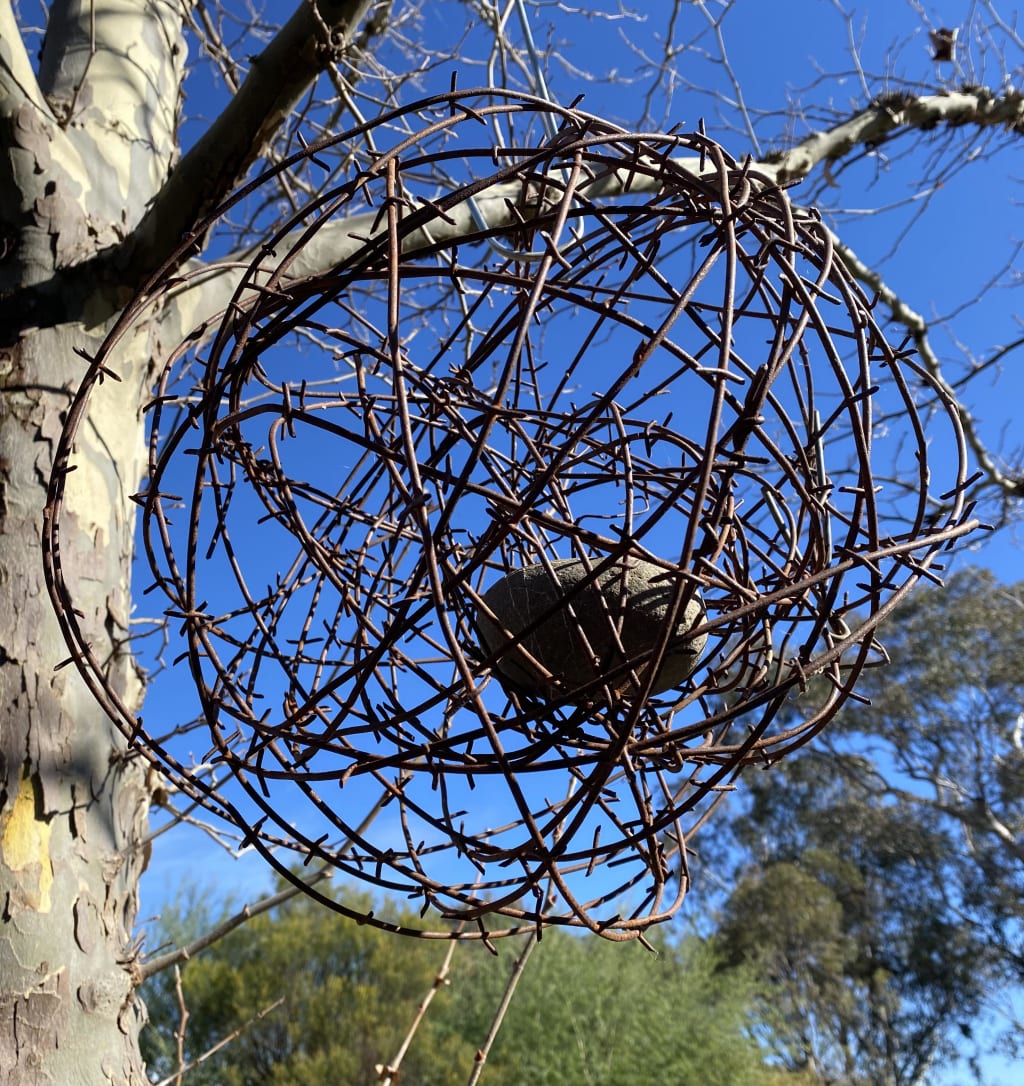
I love the texture of old rusty iron, the subtle ripples of its surface where air has nibbled it away over decades. I love the red-orange colour which is earthy and natural, a far cry from primary colours and shiny galvanized silver of new metal.

I have quite a bit of old iron lying around in the form of decaying farm equipment. I had grand visions of adaptations of this horse-drawn junk, that would stand old ploughs up on their hind legs to claw at the air with their mouldboards as praying mantises, and a harrow converted to a giant rampaging spider.
When I got a plough dragged back home to play with, however, I discovered that cast iron is HEAVY. My plan to stand up my insect/equipment was going to require so much structural support that I couldn’t get my head around how it would work, despite the fact that a lovely local sculptor offered to teach me how to weld.
I decided that perhaps an old plough was satisfactory just being itself.

Plan B was a little less ambitious, and involved the many rolls of barbed wire that were left over when some dilapidated fences were torn down and replaced. The rolls I liked in particular were the “war barb”: single strand wire with single (“two-point”) barbs attached by welding rather than winding around. I’m not sure how it was made, possibly by hand or some process that laid many rows of plain wire out with the cross pieces cut between. Presumably it was used when supplies from the United States, the main source of commercial barbed wire in Australia from the 1880s, were hard to come by. It also uses less metal, so it could be that the amount available for fencing was limited by the army’s need to make weapons.

The main thing is, single barb is easier to handle than the usual (“four-point”) commercial barb which is wound onto a double wire, although I do use that sometimes. Four-point barb hooks together better than two point, and is stiffer. The main thing is that it’s rusty. Imperfections are the point.
The main two pieces of equipment needed are:
- Leather or other thick Gardening Gloves for holding and bending and
- Pliers for cutting and tight bending
Additional equipment
- Tie-wire, any gauge. I try to use old bits rather than new silvery galvanized pieces which can look too obvious, but that depends on taste.
- Power Drill and Bolts for attaching pieces or to a wall.
- Hooks as necessary. I often use the sort you hang planter baskets from.
My initial idea was to make a sort of “barbed-wire heart” by crushing one of the rolls into a heart shape. I thought it would be symbolic and fun, but it just looked like bent wire. Not in a good way.
So, I went back to playing with the tendency of the wire to loop, and made circles, hanging other pieces of old iron in the middle.
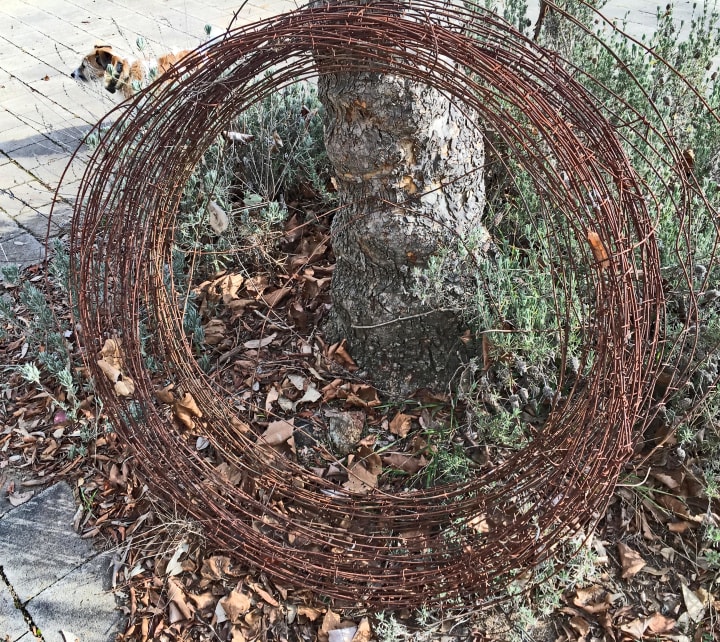
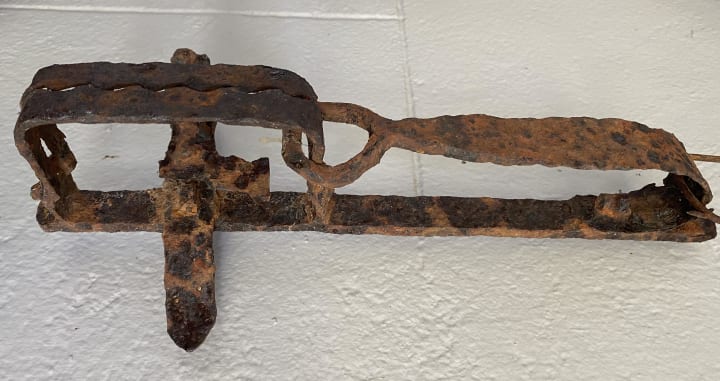
A loop with old sheep-shearing hand clippers that looked a little clock-like I called “Shearing Time”. Another with a rabbit trap became “Rabbit Proof Fence”. The incredibly witty names were a substantial part of the effort involved.

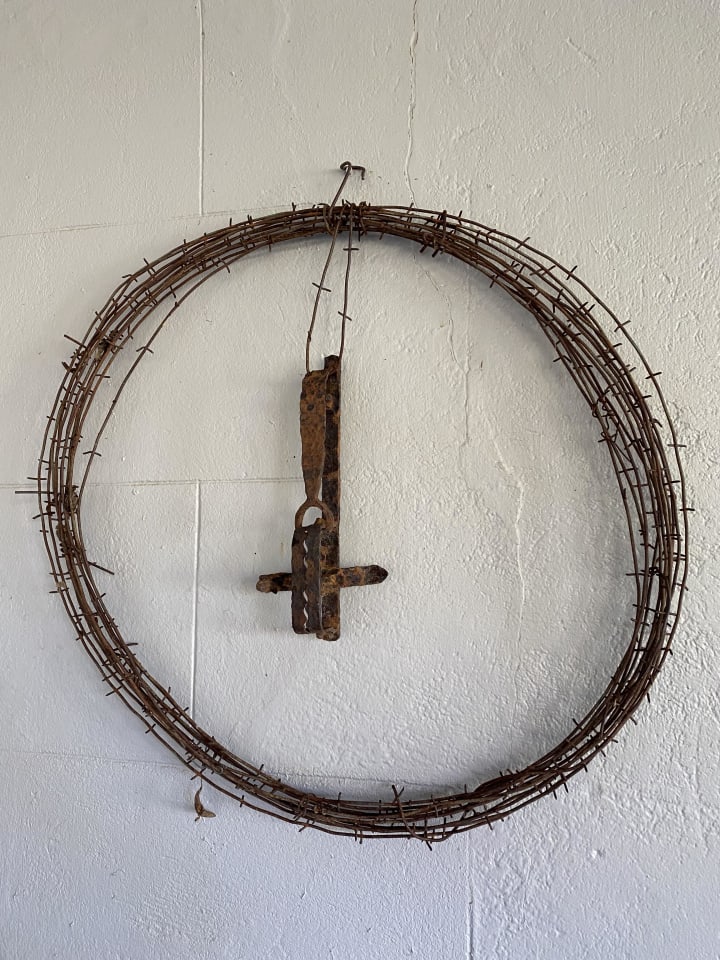
I had a more ambitious idea for making a strange bird with a big beak, using a handmade funnel from the long-gone shearing shed below the house. I made the body by rolling up two balls of wire, one larger than the other. The first was too loose, but unrolling once it’s satisfactorily hooked together would be difficult, so I converted it into an atomic system with a rock at the centre and orbiting wire.
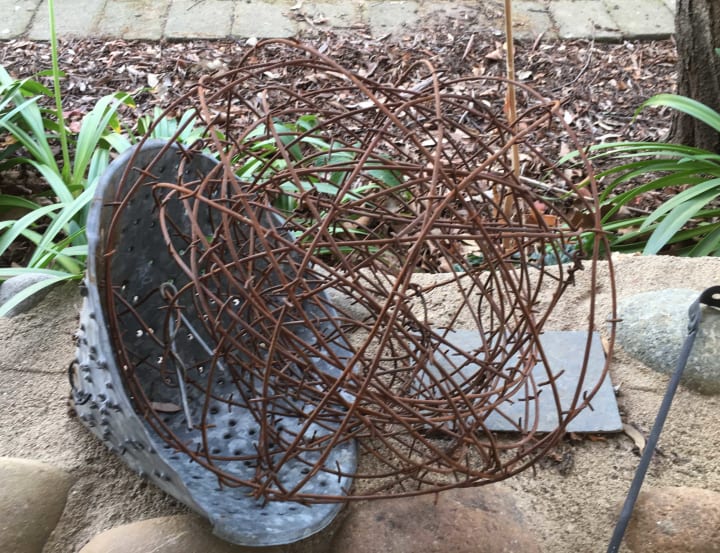
Going back to the strange bird with a new tighter ball, I added the funnel beak, and wings and tail in silvery galvanized metal, plus the ridiculously small feet made from old broken fire irons.
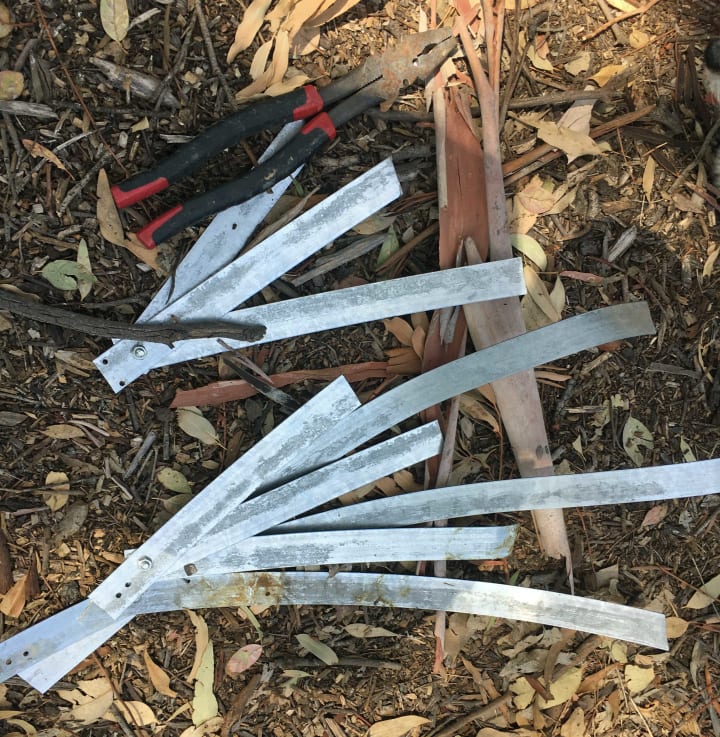
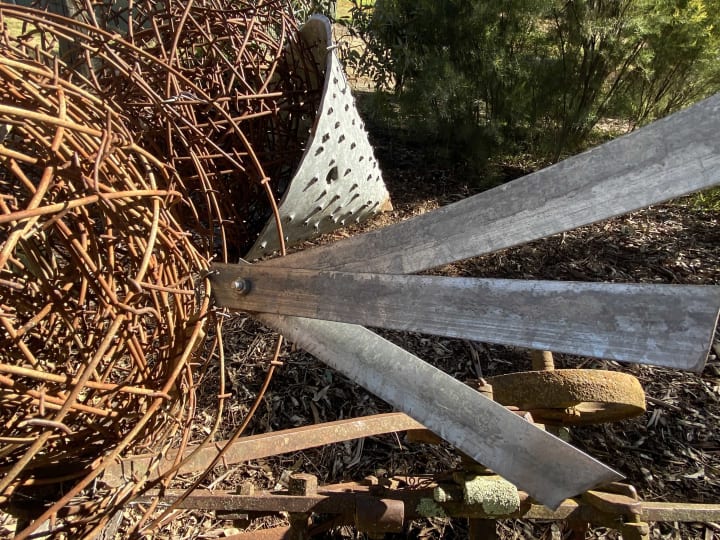
As usual with iron, it came out a bit heavier than I expected. I didn’t trust the branch I was originally going to hang it from not to break and drop it on someone walking unsuspectingly underneath, so I impaled my creation on a lever from the old plough. Now the mad bird looks as if it’s coming in for a very hard landing that makes we wince, but also laugh, when I see it. Occasionally gravity triumphs and it swings underneath. At some point I’ll work out a better location for it, so the mad bird can fly.

I added small river stones as eyes, for an even madder look.
After that success (?) I decided one of the discs from the plough looked enough like a banjo to be combined with more of the barbed wire, another old bit of metal and some blocks of wood, into a musical instrument expressive of the painfulness of creativity to the musical soul.

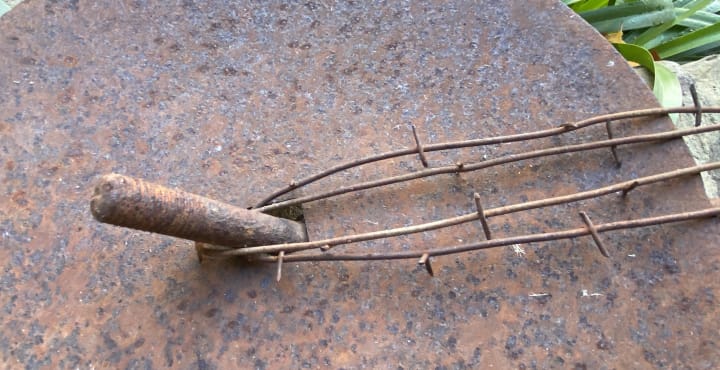
It makes a dull twanging sound.
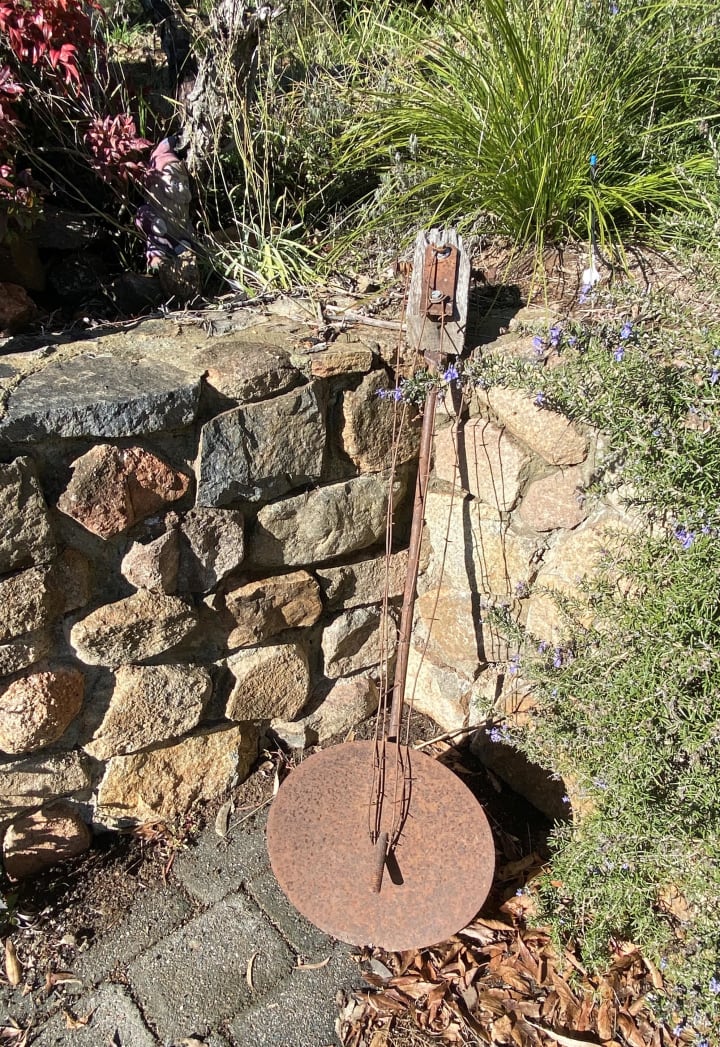
Perhaps the need for pain in creativity is over-rated. Since I realized I should use the leather gloves, I certainly haven’t had even a scratch.
I love the fact that when I look at barbed wire, I see birds and banjos, while others will look at my banjo and see old wire and scrap wood.
I have another old fence to roll up soon, and will have to explore a few more barbed wire ideas. Double loops? Giant balls? Multiple stacking balls like snowmen or pillars? A hanging frame made of old wooden fenceposts, with wires strung downwards and small objects attached, like a very bad abacus?
Hmm.
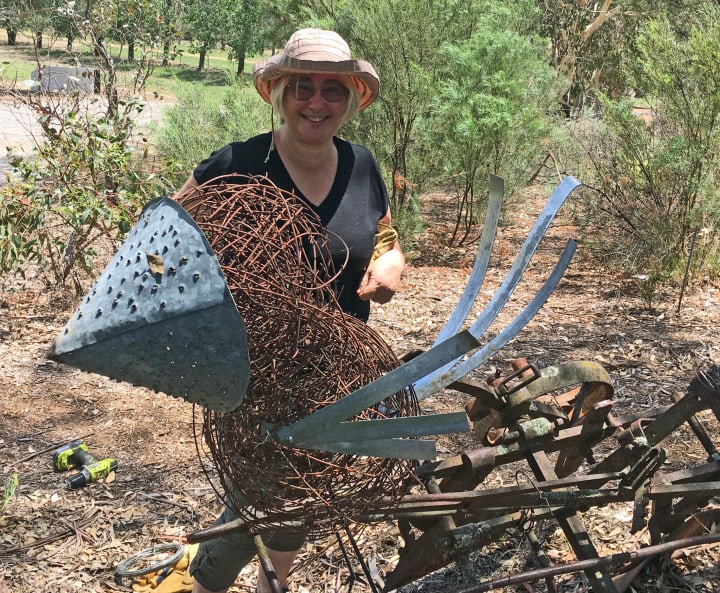
About the Creator
Fiona Hamer
Simultaneously writing fiction and restoring a sheep farm in Australia. Can get messy. You can see more about life on the farm at onebendintheriver.com.


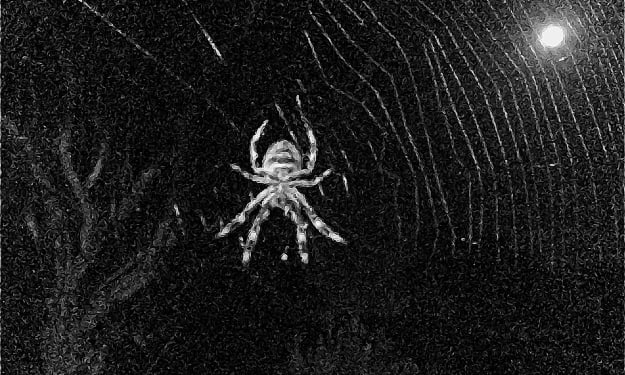
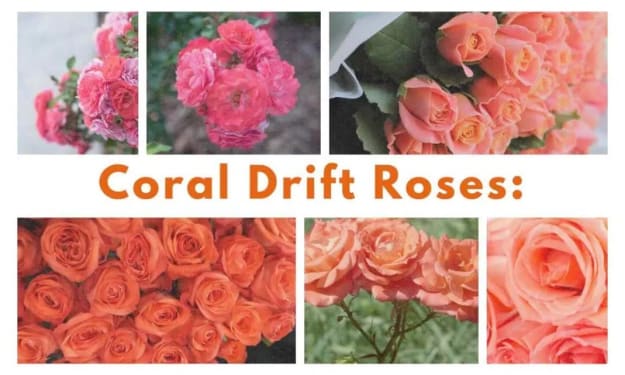


Comments
There are no comments for this story
Be the first to respond and start the conversation.